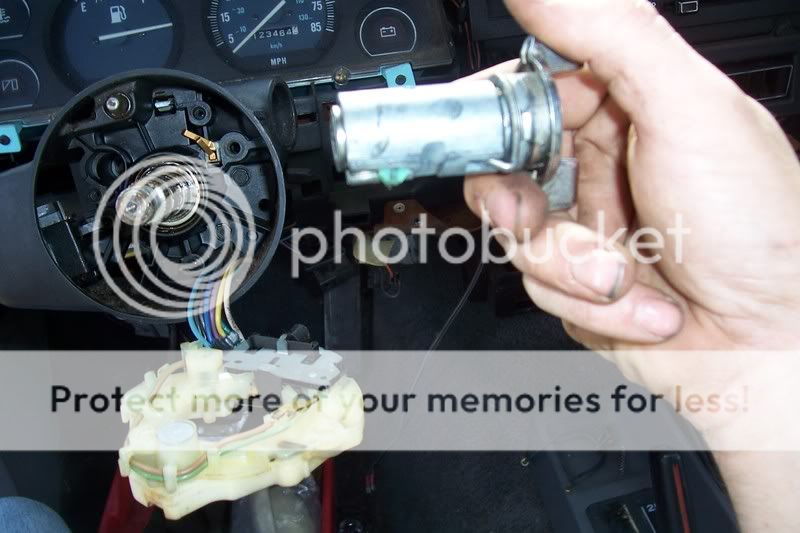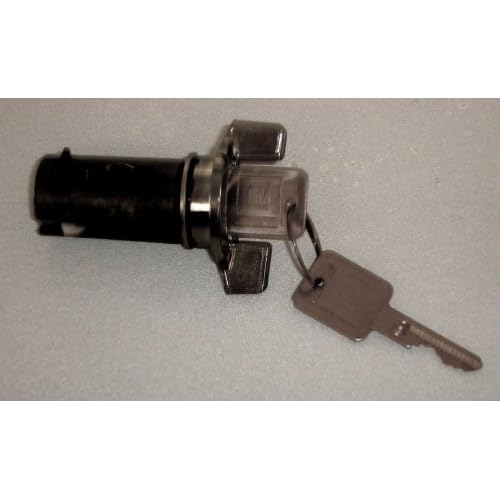Not sure what year it is from, but I'd guess late 80's non tilt. I tried the screwdriver deal. I even tried to beat it into the lock with a 3lb sledge hammer, with nary a scratch.
Anyone that has drilled one out please let me know how you've done it, I think I'm down to having to do it that way.
No need to drill and DO NOT do the above any more. You can break the rack linkage behind the ignition lock.

not good. Let's cross our fingers on that one for now.
Look at this picture again. The arrow points to the buzzer actuator. It is white and has 2 copper contacts pointing to the 11 o'clock position. Use this as a reference. There are two types of retainers. One is a screw retainer, the other is a spring loaded, half moon type retainer.
Screw Retainer type:To the immediate right of the buzzer actuator is the hole where the screw retainer came out (there are three types, a torex, hexhead, or a phillupshead screw). If yours has this screw, take it out. (If not, see the Spring loaded Retainer Type). If the ignition does not come out, the buzzer actuator tab
On the ignition lock may be hindering removal, (or it has the spring retainer type lock). It's shown in the next picture and is blue, on the bottom left of the lock and is shown extended.
In either case this actuator needs to be removed. In your case, this tab may be extended and is caught behind the white ignition actuator described above. To bypass this, you must remove the white actuator by gently pulling the actuator out. Wiggle it and use medium pressure with needle nose pliers. It WILL come out. Now pull the ignition out. It still may give you some resistance, because of damage or deformed actuator tab. You can toss the white actuator and the clip retainer if you wish to deactivate your key buzzer. That is it's only function and is not a necessary component. If it does not come out, then it may have a spring retainer. Look my next post on this type and how to deal with it.
NOTE: (1) never have a key inserted into the lock (it protrudes the Tab on the ignition lock). (2) with both or these types of ignitions, the ignition does NOT (and should not be) be turned.





